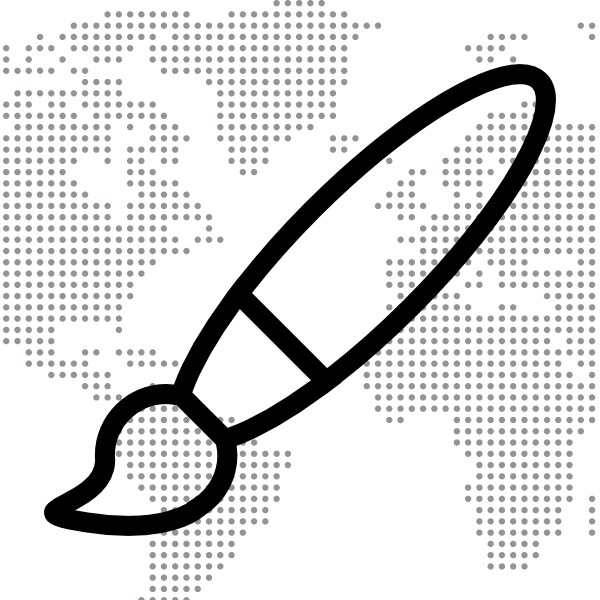EUROPE – BLACK IN THE WORLD
African immigrants to Europe are those who live in or who are born in Africa, who immigrate to Europe. Although immigration from Africa to Europehas increased substantially in recent decades, it is not a recent phenomenon.
Since the 1960s, the main source countries of migration from Africa to Europe have been Morocco, Algeria and Tunisia, resulting in large diasporas with origins in these countries by the end of the 20th century. In the period following the 1973 oil crisis, immigration controls in European states were tightened, but the effect of this was not to reduce migration from North Africa but rather than encourage permanent settlement of previously temporary migrants, and associated family migration. Much of this migration was from the Maghreb to France, The Netherlands, Belgium andGermany. From the second half of the 1980s, the destination countries for migrants from the Maghreb broadened to include Spain and Italy, as a result of increased demand for low-skilled labour in those countries.[8]
Spain and Italy imposed visa requirements on migrants from the Maghreb in the early 1990s, and the result was an increase in irregular migration across the Mediterranean. Since 2000, the source countries of this irregular migration have grown to include sub-Saharan African states.[8]
source: https://en.wikipedia.org/wiki/African_immigration_to_Europe
Policy & Politics

Policy & Politics in Europe
There were several migration waves and relocations which took place and affected people of African descent. Their place in society and opportunities of advancement remains challenged to various degrees in different parts of the world. In our Monthly Highlights section we feature individuals who have overcome, and who are testament of the redeeming power of determination and talent. Below are the accomplished individuals in Policy & Politics in Europe.
Business & Education

Business & Education in Europe
There were several migration waves and relocations which took place and affected people of African descent. Their place in society and opportunities of advancement remains challenged to various degrees in different parts of the world. In our Monthly Highlights section we feature individuals who have overcome, and who are testament of the redeeming power of determination and talent. Below are the accomplished individuals in Business & Education in Europe.
Art & Culture

Art & Culture in Europe
There were several migration waves and relocations which took place and affected people of African descent. Their place in society and opportunities of advancement remains challenged to various degrees in different parts of the world. In our Monthly Highlights section we feature individuals who have overcome, and who are testament of the redeeming power of determination and talent. Below are the accomplished individuals in Art & Culture in Europe.
During the period of 2000-2005, an estimated 440,000 people per year emigrated from Africa, most of them to Europe.[9] According to Hein de Haas, the director of the International Migration Institute at the University of Oxford, public discourse on African migration to Europe portrays the phenomenon as an “exodus”, largely composed of irregular migrants, driven by conflict and poverty. He criticises this portrayal, arguing that the irregular migrants are often well educated and able to afford the considerable cost of the journey to Europe. Migration from Africa to Europe, he argues, “is fuelled by a structural demand for cheap migrant labour in informal sectors”. Most migrate on their own initiative, rather than being the victims of traffickers. Furthermore, he argues that whereas the media and popular perceptions see irregular migrants as mostly arriving by sea, most actually arrive on tourist visas or with false documentation, or enter via the Spanish enclaves, Ceuta and Melilla. He states that “the majority of irregular African migrants enter Europe legally and subsequently overstay their visas”.[8] Similarly, migration expert Stephen Castles argues that “Despite the media hysteria on the growth of African migration to Europe, actual numbers seem quite small — although there is a surprising lack of precision in the data”.[10]
According to the Organisation for Economic Co-operation and Development (OECD), migration from African countries to more developed states is small in comparison to overall migration worldwide. The BBC reported in 2007 that the International Organization for Migration estimates that around 4.6 million African migrants live in Europe, but that the Migration Policy Instituteestimates that between 7 and 8 million irregular migrants from Africa live in the EU.[11]
Source-https://en.wikipedia.org/wiki/African_immigration_to_Europe
Demographics
Some of the larger populations of immigrants from Africa living in Europe are:
Afro-Caribbeans in Europe
Between the 1950ties and 70ties many black people from the former Caribbean colonies of Britain and the Netherlands and from the overseas territories of France moved to Europe. They thought they were part of the ‘motherland’, but they soon found out the reality in Europe was different.
United Kingdom
“Windrush: The generation that arrived in the 1950s and 1960s from the Caribbean resolutely gave their all for Britain but were in many ways failed by the nation,” wrote the Daily Mail.
The mass immigration of black people from the Caribbean to the Britain started with Windrush in 1948. Right after the war many Caribbeans who had fought in WO II grabbed the chance to come back to ‘motherland’ since Caribbean countries suffered high unemployment, while in Britain there was a shortage of labour.
or France the immigration started in 1962 with BUMIDOM, a controversial institution which was created by the French government in 1962 to supply the French industry with cheap labour from French Overseas Departments. The migration was controversial because people were offered a good future, but instead, regardless of the level of their education, they were put to work in menial jobs.
Another part was these black people from the Caribbean were confronted with racism and were treated as second class citizens, which often lead to a psychological confinement. Late French Poet Aimé Césaire compared this migration to a deportation.
In the early 1960s, Guadeloupe, Martinique and Reunion are in crisis: unemployment plunges a large part of the population in poverty, rapid population growth threatens the islands, the independence movements flourish. Youth is boiling and revolt is simmering. To lower the pressure, the French government finds a solution: Bumidom. The program is supposed to empty colonies and use the young people to address the shortage of labor in mainland France state-owned companies. It offers a one-way ticket for housing and employment opportunities for young Caribbeans and Réunionnais in exchange for their departure. Believing in the promise of a better life, more than 160,000 men and women between 18 and 25 years will pass through its structures. But many of them have have the feeling of being displaced, exploited and cheated.
By entering today’s intimate world of these uprooted families, the film tells the iconic and unique experiences of the men and women of Bumidom “. See video below.
About the BUMIDOM French Misha M wrote a comment on Afro-Europe, she wrote: “My mum is one of those Caribbeans that came at the end of the sixties through what was called the BUMIDOM. Basically France paid thousands of cheap passages through 6 months of a bad boat trip, so people could arrive and be exploited as third category citizens and cheap labour. The way there were treated on arrival and the fact that the situation didn´t change for many years after, changed this generation for ever. They did lost their identity and pride or part of their dignity and weren´t given the opportunity to have a real and positive assimilation. I´m like many other, the daughter of that generation, and what we learned from the difficulty of our parents is not to make much noise, always know our place in society and of course don´t dream too high and too loud. Because even if we were given access to a good education we knew that after all, we would be confronted to a institutional racism (under the table, not spoken or in your face but real ) that would not let us pass from the service job sector.”
For the Netherlands the mass immigration started in 1975 when Suriname became independent . Many people didn’t had much faith in the economic future of the country. From the former Dutch Antilles the ‘mass’ immigration started in 1985 when the big oil refineries on Curacao and Aruba closed down their operations . The former Netherlands Antilles are still part of the Kingdom of the Netherlands.
An interesting chapter about the Surinamese migration to the Netherlandsstates,” At the time of independence, in 1975, Dutch subjects living in the colony of Suriname were given the choice of Dutch or Surinamese citizenship. Amazingly, 200,000 out of a population of 450,000 left Suriname for the Netherlands – a level of migration that is staggering in size and scope. Today, the population of Suriname has rebounded to roughly 450,000, while 300,000 people in the Netherlands trace their ancestry to Suriname. While only 2% of the population of the Netherlands is Surinamese, 40% of the Surinamese population lives in the Netherlands.” Roughly 50% of the Surinamese population is Afro-Caribbean.
If you want to find out how the Surinamese population has integrated in Dutch society read the article ‘Race in the Netherlands: The Place of the Surinamese in Contemporary Dutch Society‘
The Antilleans or Dutch Caribbeans
Multicultural Netherlands: Today, many individuals from the Dutch-Speaking Caribbean islands of Aruba, Curaçao, Bonaire, Sint Eustatius, Saba and Sint Maarten immigrate to the Netherlands to find jobs, complete their education, and lead a better quality of life. Since these Antillean islands are part of the Kingdom of the Netherlands, it is relatively easy for them to immigrate to the Netherlands. Most Antillean immigrants in the Netherlands originate from the island of Curaçao.
Afro population in Europe
|
Continent or region |
Country population |
Afro-descendants |
[16] Black and black-mixed population |
| Europe | 738,856,462 | ~ 1.0% | < 8,000,000 |
| France[29][30] | 62,752,136 | 8.0% (inc. overseas territories) | 3,800,000 |
| United Kingdom | 60,609,153 | 3.3% (inc. partial) | 2,015,400 |
| Germany | 82,000,000 | 1.0% | 817,150 [31][32] |
| Netherlands[33] | 16,491,461 | 3.1% | 507,000 |
| Italy[34] | 60,020,805 | 0.54 % | 324,917 |
| Portugal | 10,605,870 | 2.0% | 201,200 |
| Spain | 40,397,842 | 1.6% | 683,000 |
| Sweden | 9,263,872 | 1.2% | ~115,000 |
| Norway[35] | 4,858,199 | 1.4% | 67,000 |
| Belgium | 10,666,866 | 2.7% | ~300,000 |
| Republic of Ireland[36] | 4,339,000 | 1.1% | 45,000 |
| Russia[37] | 141,594,000 | 0.03% | 40,000 |
| Switzerland[38] | 7,790,000 | 0.7% | 57,000 |
| Finland | 5,340,783 | 0.37% | 20,000 |
| Austria | 8,356,707 | 0.2% | 14,223 |
| Ukraine | 45,982,000 | 0.01% | 4,500 |
| Hungary[39] | 10,198,325 | 0.06% | 6,500 |
